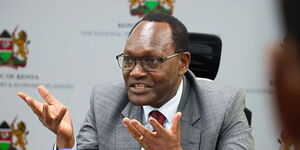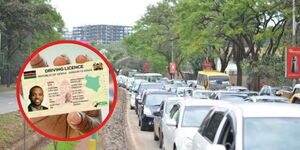Kenya's borrowing costs remain at their highest levels in nearly a decade, even as the Central Bank of Kenya (CBK) recently lowered interest rates. The persistently high costs are squeezing the local economy and dampening credit demand, creating a complex landscape for borrowers and investors alike.
The Central Bank of Kenya's latest data reveals a worrying trend: total lending by commercial banks dropped by Ksh158.2 billion in the first half of 2024. This significant decline points to the impact of elevated interest rates on both credit demand and loan defaults.
According to the CBK, total banking sector lending fell by 3.8 percent, from Ksh4.199 trillion in December 2023 to Ksh4.041 trillion in June 2024.
The reduction in loans has been felt across key economic sectors. The manufacturing, transport and communication, trade, personal and household, tourism and hospitality, construction, energy, agriculture, and real estate sectors have all experienced decreased gross loans. This broad-based decline indicates that high borrowing costs are stifling economic activity across the board.
The CBK's report points to a challenging business environment, with increased non-performing loans (NPLs) exacerbating the issue.
The ratio of NPLs to gross loans surged to 16.3 per cent in June 2024, up from 14.8 per cent at the end of 2023. The total value of NPLs increased by 5.8 percent, rising from Ksh621.3 billion in December 2023 to Ksh657.6 billion by mid-2024.
Despite the recent reduction in the Central Bank Rate (CBR) from 13 per cent to 12.75 per cent, borrowing costs remain close to their highest levels since December 2015. Commercial banks' average lending rates soared to 16.85 per cent in June 2024, up from 14.64 per cent in December 2023. This high cost of credit has prompted banks to tighten their lending standards, further constraining access to loans.
The CBK's move to cut rates follows a period of intense economic pressure, including protests over proposed tax hikes sought by the International Monetary Fund (IMF).
These events have forced the government to revise its fiscal strategy, shifting towards increased domestic borrowing and boosting sales of shilling-denominated bonds. This strategy, however, has kept yields on local debt elevated.
“The local yields and the implied risk premium reflect the uncertainties surrounding Kenya’s fiscal prospects, debt trajectory, and governance,” Gergely Urmossy, an emerging markets strategist at Societe Generale told Bloomberg. “There are significant concerns about how much external funding Kenya can secure in the coming months.”
The government’s budgetary adjustments, including expenditure cuts and increased domestic borrowing, have done little to alleviate market concerns. With the IMF’s latest aid tranche on hold and discussions about a potential $600 million disbursement postponed, there are growing doubts about Kenya’s ability to manage its fiscal challenges effectively.
Urmossy predicts that while the IMF will likely continue to support Kenya, more delays are expected. “Both the IMF and the Kenyan government need to revisit their strategies,” he stated to the publication. “They must develop a plan that addresses fiscal risks while remaining acceptable to the electorate. The challenge lies in balancing tax increases and expenditure cuts without triggering further social discontent.”












